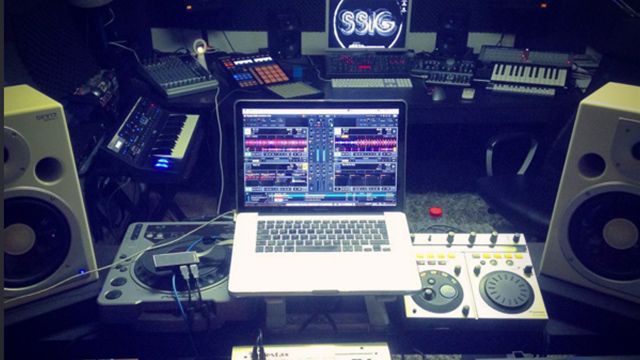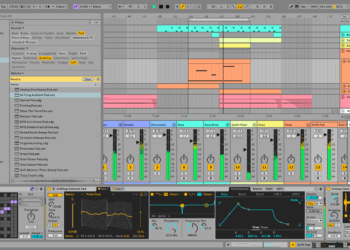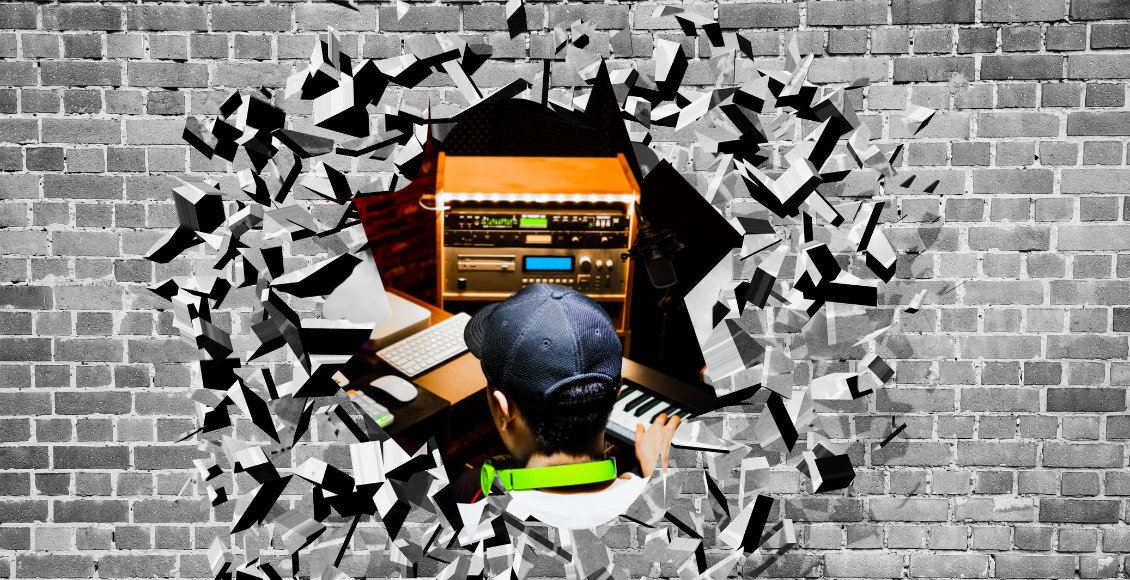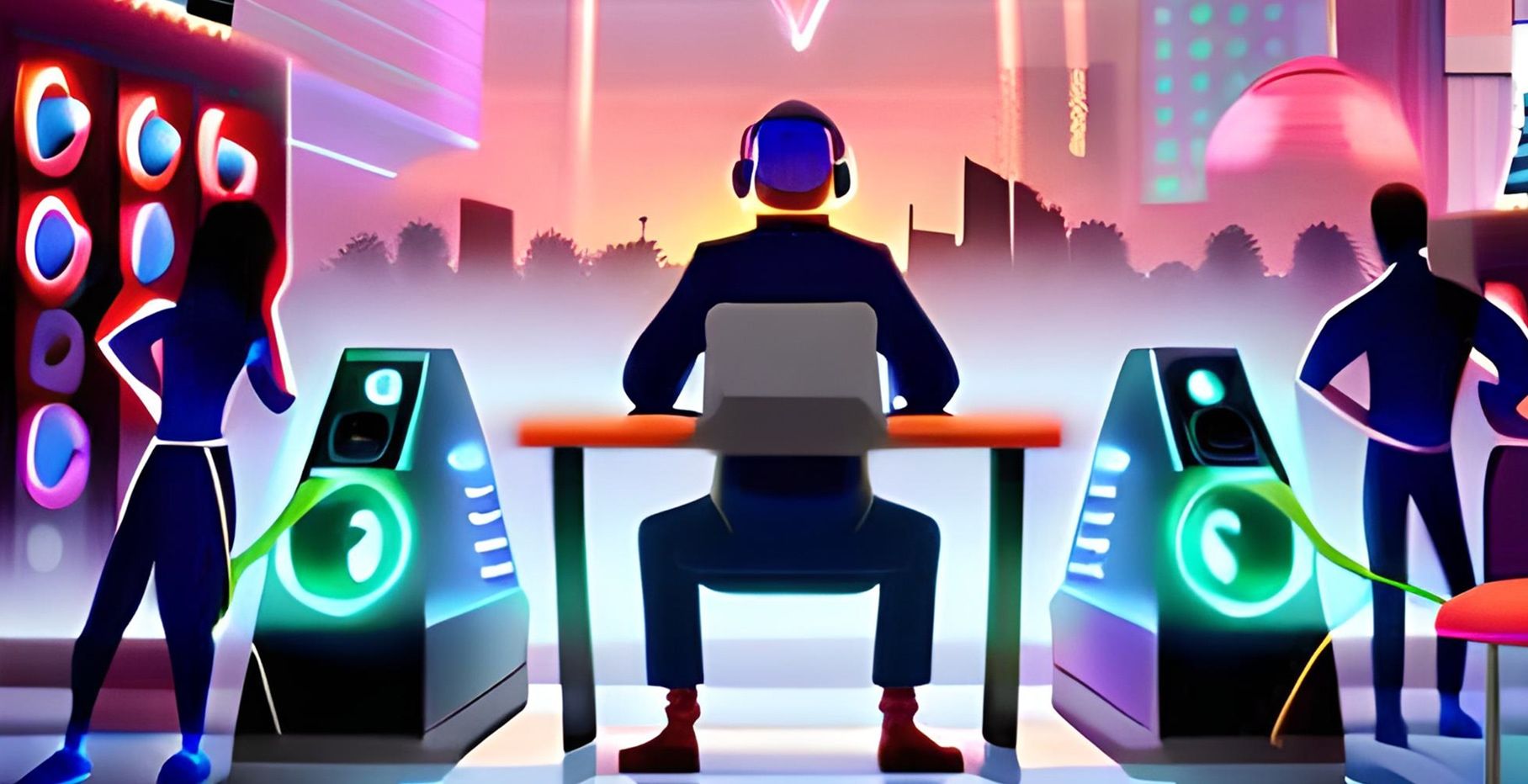When sitting down to work on a DJ mix, a new track, or any task that you might need to spend time in your studio with, it’s all too easy to get distracted and develop bad habits. In today’s article, guest contributor Sam Malta shares his tips for optimizing your music production environment and getting the most out of every session in your home studio.
When you first get into making music, everything just works. Not from a quality standpoint (your music sounds terrible that early on), but you have no troubles sitting down and working on a project. As time passes and you learn more about production, you start to pick up bad habits.
These habits always seem trivial at first. You might be working on a difficult section of a track and decide to quickly check Facebook to “refresh your mind.” Then you do it during your next production session, and the next.

Bad habits like these cause us to work slowly and ineffectively, if at all. They’re the reason why so many producers mistakenly think they have writer’s block, or some unique condition that disables them from making music. Want to ditch bad habits, or optimize for efficiency before they happen? This post is for you.
The advice shared in this article is custom-tailored to each person. I urge you to experiment, don’t dismiss ideas simply because you feel they won’t work for you. Try them out for a few weeks and see if they work.
With that said, some of the advice in this post is universally correct. I’ve never met anyone who thinks that distractions aid creativity, for instance.
Optimize Your Physical Music Production Environment
Though the mental aspect of creative work is more important than the physical environment you do that work in, your physical environment still has bearing on how well you do your work.
For instance, if you have a games console on your desk that’s linked up to your main display, at some point during the creative process (normally when it starts getting difficult) you’ll be tempted to use it. If your games console is in another room, you’ll be less tempted. Make sense? Here are some more tips:
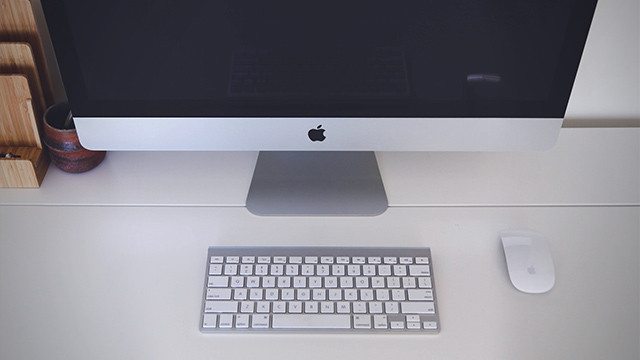
Keep it clean
There’s a cliché quote, “if a cluttered desk is a sign of a cluttered mind, what is an empty desk a sign of?” I think there are a select few people that can work just fine with a cluttered workspace, but they’re part of the 1%. By keeping your workspace clean:
- You’ll feel better about working in it
- You won’t feel self-conscious when you invite your buddy around for a collab
- You’ll experience fewer distractions
So, take those week-old coffee mugs to your kitchen and wash them.
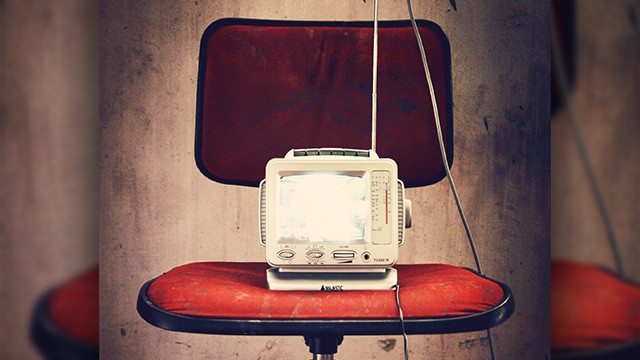
Don’t be afraid to spend money on a good chair
“You spent $1000 on a chair?!” I asked my friend as I sat down in his studio. He responded calmly by saying that $1000 was a trivial investment considering he spent 8+ hours per day sitting in it. My next gear purchase? A decent chair.
If you want to feel comfortable while producing and protect your back, then you need a decent chair. You don’t need to spend $1000, just don’t shoot for low quality.
Bonus Tips:
- Any popular office chair will do the trick.
- If you’re a full-time producer, or you do other work from home (at the same desk you make music) then this applies especially to you
- Alternatively, get a standing desk. They allow you to dance while producing and they also apparently have health benefits, but the former is more important.

One or two displays?
A lot of people automatically assume that using two computer screens for production is more efficient and allows you to work faster. This isn’t always the case. Sure, there are benefits to using two screens: you can have your mixer open on one screen while arranging in another, use a screen as a dedicated spectrum analyzer, and do many other things.
However, an extra screen can also slow down workflow as it can prohibit you from focusing on one aspect of production. Take the mixer/arrangement two-screen setup – if you’re trying to arrange your track, you don’t want to incur the cost of task-switching by popping over to the screen your mixer is on and adding compression and fancy effects that detract from your main focus: arrangement.
With one screen, it’s easier to focus on the task at hand. Using two screens is not objectively better than using one, and vice versa. There are benefits to both, and the only way to find out which is better for you is to experiment.
Minimize potential distractions
You might not have many distraction-inducing items in your workspace (having cleaned and organized it – you did take away those coffee mugs, right?) but it’s likely that you’ll still encounter distractions when making music – including:
- Wife/husband/girlfriend/boyfriend
- Kids/parents
- Roommates
- Dogs, cats, and spiders
- YOUR PHONE
If you have roommates, or a highly considerate partner, then it pays to make a “do not disturb” sign that you can hang on the outside of your door. It may seem over-the-top to you, but nothing breaks up your creative flow more than “Hey everybody, come watch this nutter on TV!”
And for the love of everything good, please turn off your phone. Unless you’re a paramedic on call, you don’t need to have it buzzing every five minutes. Put it on airplane mode and ideally in another room so you’re not tempted to pick it up and use it.

Further ideas & enhancements
Optimizing your production environment doesn’t have to be completely boring. Once you’ve decluttered your workspace and minimized as many potential distractions as possible, you should consider:
- Getting a whiteboard. Whether it’s an EP, album or single – having a whiteboard is great for tracking projects. Write down notes and ideas on it so you can take a quick glance at them while producing.
- Improving your lighting. Buy some mood lighting! Avoid overhead ceiling lights – get lamps and lighting that feels comfortable
- Buying a coffee machine. Most of us are caffeine-dependent. There’s no point fighting it, so succumb to the darkness further by installing a coffee machine in your studio.
Of course, you should be investing in your studio before worrying about fancy stuff like lighting. If you don’t have monitors yet or your room isn’t acoustically treated, put them at the top of the list.
Optimize Your Brain: Improving Your Production Workflow

Your studio/bedroom is looking tight. Your workspace is clean, you’ve hacked together a do not disturb sign, and your $99 coffee machine is doing its job well. Your production sessions are much better. You don’t get distracted as much as you used to and you feel that you can sit down for longer without feeling uncomfortable (you did invest in a chair, right?), but you still feel like you’re lacking in regards to workflow.
Well, like the renowned Bruce Lee once said – “one must optimize their mind as well as their physical music production environment.” Here are four core techniques that will help you stay focused, overcome writer’s blocks, and enjoy the creative process even more:
1. Create a routine and stick to it
When you reach the upper echelons of the creative world, you’ll realize that everyone has a routine of some sort. A lot of producers mistakenly assume that routine kills creativity, and that it’s better to be sporadic and make music “when the inspiration hits.” Well, what about when the inspiration doesn’t hit?
By routinely working on music, you improve faster and stay in a sustained creative mindset. If you make music everyday, even if just for an hour, you’ll find that you can switch into the creative mindset easier than you could if you were producing “every now and then.”
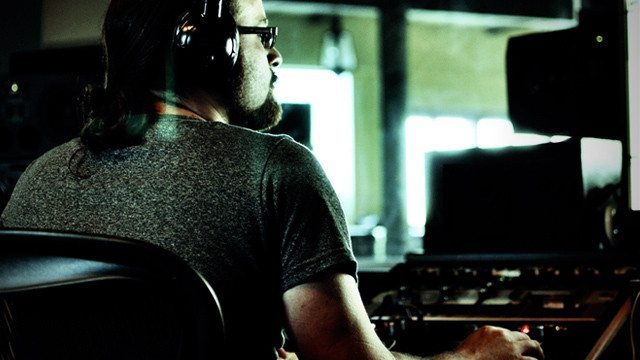
2. Set an objective for each session
You sit down with a solid two hours ahead of you, stoked to work on that project of yours that’s been occupying your mind throughout the abnormally stressful week. Two hours later, you take a break and realize that you really haven’t done much at all.
You tweaked your lead sound, added a new clap sample, but for the most part, you just mucked around. You didn’t have an objective. You didn’t have anything to work towards or focus on. Setting an objective for each production session is, in my opinion, the most underrated piece of creative advice.
If you’re starting a track with only one hour of time available, your aim could be: write a melody. Everything else is unimportant for that particular session. Following that, you might have a longer session – maybe 2–3 hours, so you set your goal as: create basic arrangement and chord progressions. Doing this results in a more focused, productive production session and naturally forces you to finish music more quickly.
3. Work quickly
Most people shy away from working quickly because they feel it leads to a lower quality end product. I disagree – I think there are certain points in the production process where you should take your time and think about what you’re doing, but for the most part, intuitive decisions create good music.
Intuitive decisions happen quickly, so you should optimize for them. The more quickly you work, the less you analyze what you’re doing. The more you analyze what you’re doing, the less creative you are (watch this talk by John Cleese if you want to understand why).
Working quickly forces you to think sub-consciously. It suppresses the anti-creative perfectionist mindset.
4. Think of yourself as a professional
You should view yourself as a professional, even if you don’t make music for a living. Why? Because it will help you work better:
- A professional does not wait for inspiration, he works anyway.
- A professional constantly expands his base of knowledge.
- A professional knows that there are good days and bad days, and that pushing through the bad days is just as important and capitalizing the good.
Be professional, even if it isn’t your sole profession.
Take Action Now!
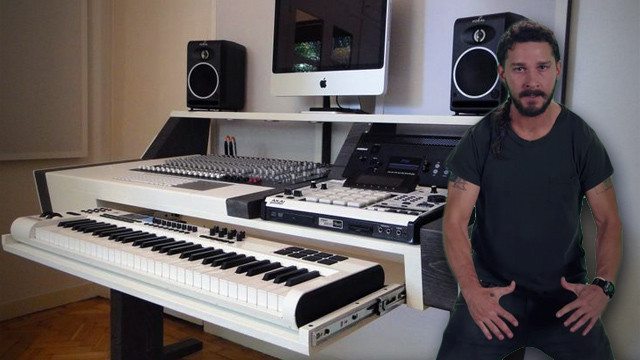
Instead of just reading this article, agreeing with it, and doing nothing, you have to take action. Waste no time – here’s two things you can do right away:
- Improve ONE physical aspect of your physical production environment. You don’t need to buy a new chair, it can be something as simple as removing a piece of rubbish.
- Create a sustainable routine for production. Consistency is going to do wonders for you. If you don’t have a routine at the moment, create one. Not sure where to start? 45 minutes per day in the morning or evening will do (make sure to set goals).
Want to improve your workflow & creativity even further, check out Sam’s book The Producer’s Guide to Workflow & Creativity or his a free 30-day email course if you’d rather invest your money in studio gear.
Header image credit: @mikemorales214’s awesome studio/DJ setup he posted on Instagram


